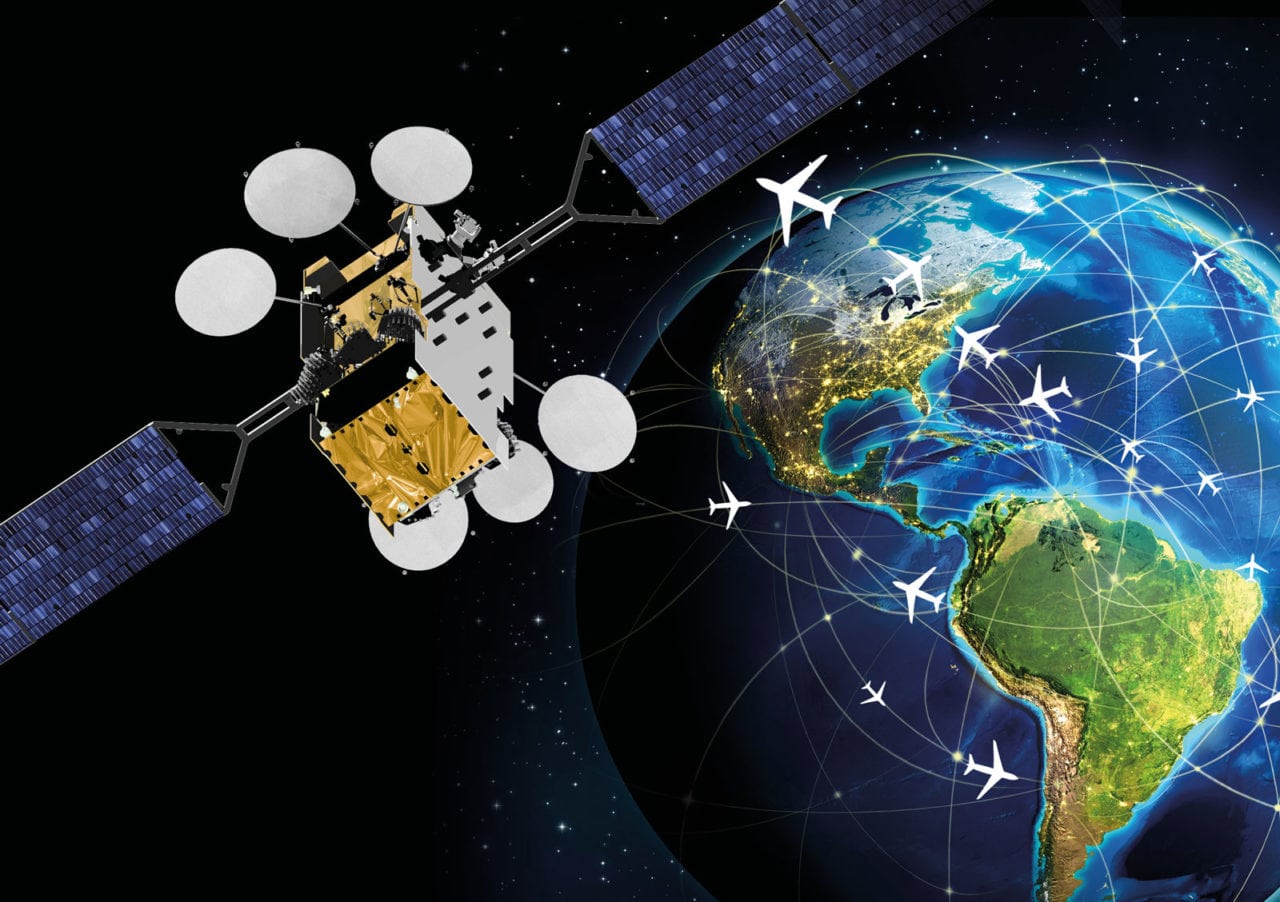[Avionics Today 09-13-2016] Avionics and In-Flight Entertainment (IFE) provider Thales has teamed up with satellite-operator SES to build a network that will deliver what they believe will be the “most efficient in-flight connectivity experience” to passengers flying over the Americas. The companies announced their Ka-band High-Throughput Satellite (HTS) solution, FlytLIVE, is planned to begin operating in mid-2017 with two of SES’ in-orbit satellites and a Thales Alenia Space-built third satellite, SES 17, launching in 2020 to fill out the solution and meet “anticipated market growth” over the Americas. Thales Alenia Space is a joint venture between Thales and Leonardo-Finmeccanica.
 |
| Thales and SES have partnered to provide a satellite-based in-flight connectivity solution. Photo: Thales |
Thales already has a large in-flight entertainment market share, with its Avant IFE system and equipment onboard airlines such as JetBlue and Japan Airlines. The company is also a contributor to the European Aviation Network (EAN), an In-Flight Connectivity (IFC) solution that combines Inmarsat’s satellite connectivity with Deustche Telekom’s LTE ground network and promises to deliver capacity at 75 Mbps with near-zero latency to aircraft flying over Europe. Thales Alenia Space has recently completed Inmarsat’s Europasat satellite for this network and is working to develop the EAN’s ground component.
With Thales’ IFE equipment already flying on many aircraft, the company could capitalize on its certified equipment, offering IFC as an additional capability for airlines.
“Thales already has a good market going with the in-flight entertainment business, so the in-flight connectivity element is a really nice add-on for them to sell to airlines,” NSR analyst Claude Rousseau told Via Satellite. “What’s important to note, though, in in-flight connectivity is that you need an entire ecosystem. And the system is not just the service provision, the system integration, [and] the capacity, but also the equipment, meaning the antenna.”
In the network’s ecosystem, SES’ satellites pose as one critical element of the IFC infrastructure. While the first two satellites for the network are already in orbit, SES is developing the last satellite, launching in 2020, with the aim to deliver airline-specific bandwidth and reliability requirements.
Karim Michel Sabbagh, president and CEO of SES, took the stage in a press conference on Monday, Sept. 13, to lay out plans for the third satellite in the network, noting that SES 17 would cover the Americas as well as the Atlantic Ocean. “It was designed with mobility in mind from day one. And it took a while to figure out how do we optimize the design and the performance of the spacecraft and certainly the economics so that we have a truly future-proof proposition,” he noted.
SES 17 represents the first geostationary High-Throughput Satellite (HTS) that operates completely in Ka-band frequency for SES, according to Sabbagh, who says the spacecraft will be optimized for data centric applications with “mobility at its heart.” Although it is still too early into the emergence of in-flight Wi-Fi to tell, Rousseau says that eventually the frequency could have a significant impact on the success of the network and what it can offer to airlines.
“I think the airlines in the future will want to have more control over the band,” Rousseau said. “After that emerging phase, airlines will probably wish to have more control and therefore choose to go with a wholesale model rather than a retail model.”
Moreover, he notes that the North American market, which the network will aim to serve, is extremely demanding in terms of bandwidth and service quality. This is exasperated by the fact that Thales is entering an already crowded market, particularly in the U.S., in which 71 percent of airlines are already contracted to rollout IFC by the end of 2016, according to Routehappy’s annual report on the state of in-flight Wi-Fi.
“This is going to crowd the market for sure,” Rousseau said. “Gogo has a large stake in Ku-band capacity with 2Ku, not just in America but globally. ViaSat, on the other hand, has gone with Ka-band. Inmarsat has gone with Ka-band and now SES has Ka-band. There is still some debate around which band is best, but at the end of the day it will come down to the quality of service requirement.”
He said it is paramount that airlines be able to offer the same quality of service over the oceans as they can in their continental flights.
“North American market is very demanding, not just in terms of bandwidth, but in terms of connectivity on both the continental routes and the overseas routes, because more and more airlines want to have a proposition that offers passengers the same bandwidth on both routes. The top issue in the industry is to offer something that is globally available at the same speed, at the same quality of service, everywhere you go,” Rousseau said.
While Thales and SES haven’t yet laid out the speeds or specifics around reliability that it plans to offer through its FlytLIVE system, Rousseau believes the two companies could have lined themselves up to be major competitors in the market alongside Gogo, ViaSat, Panasonic Avionics and others.
“I think it makes sense [for SES] to partner with someone that already has experience in in-flight entertainment. They are already in aircraft and working with airlines, to add on connectivity to their offering — it’s very logical,” said Rousseau. “The ecosystem matters, and it’s still very much under development.”